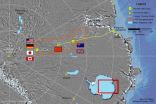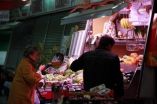Just as it does with transplanted organs, the human body recognizes foreign cells and rejects them. Embryonic stem cells, or ES cells, and the tissues they become are by definition immunologically different from any potential recipient. Physicians also have to overcome the fact that unspecialized ES cells can form tumors when transplanted into the body.
"We are very excited about the clinical potential of this finding," said Joseph Wu, MD, PhD, associate professor of cardiovascular medicine and of radiology at Stanford and senior author of the study, to be published in the March issue of Cell Stem Cell. "The immunological issue is one of the most important biological problems to solve, in my opinion. Clinicians need to make sure there is no tumor formation, and also that the cells are not rejected."
This paper, in tandem with a previous study by Wu published in February in the Journal of Clinical Investigation, helps to recast a scientific debate over the relative benefits of embryonic stem cells as compared with iPS cells, or induced pluripotent stem cells, which can be created from a person's own skin or other cells.
Some scientists argue that iPS cells can differentiate into other tissue as well as ES cells can — without the problem of immune system rejection. Yet others contend that although iPS cells behave very much like ES cells in a laboratory dish, they are not identical and may not be perfect stand-ins.
Wu's paper in February sheds new light on the dissimilarities between the two cell types. "When we compared the gene expression patterns between single cells, we saw that they were actually quite different," he said. That paper is the first to compare the gene expression patterns between iPS and ES cells on a single-cell level. In addition, although using a patient's own cells sidesteps the problem of immune rejection, generating these tailor-made cells does have drawbacks. "Most people don't realize that, although it's possible to generate patient-specific iPS cells, the cost of doing so would likely be prohibitive for all but the most specialized applications," said Wu. "It also takes time — time that a patient with an acute health problem like a stroke, heart attack, or neurological trauma may not have."
Wu's latest paper addresses ES cells' problem with immune system rejection.
Currently most animal experiments involving transplanted stem cells rely on the long-term use of immunosuppressants to prevent rejection. Most ongoing human clinical trials also use the medications (with the exception of those in which the cells are transplanted into a body location, such as the eye, that is relatively protected from the immune system), which can cause hypertension, weight gain, organ damage and an increased susceptibility to infection. Wu and the study's first author, graduate student Jeremy Pearl, wondered whether there were any other options.
To find out, they turned to a class of drugs called "co-stimulatory receptor blocking agents" that specifically block an interaction between an immune cell called a T cell and the transplanted stem cells. Normally a T cell attaches to foreign invaders in a two-step process that triggers their destruction. By preventing the second step, these medications instead teach the T cells to tolerate the new cells.
The researchers injected genetically engineered mouse ES cells into the leg muscles of mice of a different genetic background and monitored the fate of the cells over time using a technique called in vivo bioluminescent imaging. When the mice were untreated, the cells were completely rejected within 21 days. They then treated one group of mice with a combination of three of the blocking agents on days 0, 2, 4 and 6 after transplantation, and another with an ongoing course of traditional immunosuppressants. They found that the transplanted cells survived a bit longer in the mice receiving the traditional immunosuppressant — about 28 days. But the cells flourished in the mice receiving the blocking agents.
"We followed the cells for up to 100 days after transplantation and found that their numbers were in some cases increasing and in some cases remaining steady," said Pearl. "The major advantage of our technique is that it only requires a short course of suppression. And because we're not using traditional immunosuppressants, we avoid lasting side effects." What's more, Pearl showed that the temporary treatment didn't keep the mice from subsequently rejecting other types of cells — indicating their immune systems had not been permanently compromised.
Wu and Pearl found the treatment also helped the mice accept human ES cells, mouse and human iPS cells, as well as human ES cells that had been first coaxed to become precursors of several types of tissue. Acceptance of the differentiated precursor cells is particularly important because undifferentiated ES or iPS cells can form a particular type of cancer called teratomas and wouldn't be used clinically in humans.
The researchers are now testing whether the drug treatment works in larger animals like pigs, and trying different combinations and concentrations of drugs.
###
In addition to Wu and Pearl, other Stanford researchers involved in the study include graduate student Andrew Lee; postdoctoral scholars Dennis Leveson-Gower, PhD, Ning Sun, PhD, and Feng Lan, PhD; former postdoctoral scholar Zhumur Ghosh, PhD; professor of medicine Robert Negrin, MD; and professor of microbiology and immunology Mark Davis, PhD. The research was supported by the National Institutes of Health, the Howard Hughes Medical Institute and the Ellison Medical Foundation.
Wu is a member of the Stanford Cancer Center and the Bio-X program.
The Stanford University School of Medicine consistently ranks among the nation's top medical schools, integrating research, medical education, patient care and community service. For more news about the school, please visit http://mednews.stanford.edu. The medical school is part of Stanford Medicine, which includes Stanford Hospital & Clinics and Lucile Packard Children's Hospital. For information about all three, please visit http://stanfordmedicine.org/about/news.html.
PRINT MEDIA CONTACT: Krista Conger at (650) 725-5371 (kristac@stanford.edu)
BROADCAST MEDIA CONTACT: M.A. Malone at (650) 723-6912 (mamalone@stanford.edu)
NOTE TO MEDIA: Stanford medical school communications is issuing another release today about a complementary study in the same issue of Cell Stem Cell
END





